Most of us know how sunlight and air pollution affect our complexions and it is often assumed that we are safe from them when indoors. But many scientists and dermatologists now contend that the typical office environment also poses a risk to our skin.
The culprit is blue light, and we spend our work days and much of our lives exposed to high amounts of it. More and more research has shown that blue light can generate free radicals with the potential to harm the skin, similar to the effects of UVA and UVB from sunlight.
How many hours do you spend in front of a digital screen?
Most of us spend the majority of our waking hours staring at a digital screen. Studies suggest that 60% of people spend more than 6 hours a day in front of a digital device.
74% of teens aged 12-17 access the internet on cell phones, tablets, and other mobile devices at least occasionally. In two American surveys of children aged 12 to 15 years released in July 2014, researchers at the U.S. Centers for Disease Control and Prevention found that nearly three-quarters spent at least two hours a day watching TV and using a computer.
What is Blue light and how are we exposed to it?
Blue light is a colour in the “visible light spectrum” that can be seen by the human eye.
Light is made up of electromagnetic particles that travel in waves. These waves emit energy, and range in length and strength. The shorter the wavelength; the higher the energy. The length of the waves is measured in nanometers (nm), with 1 nanometer equaling 1 billionth of a meter. Every wavelength is represented by a different colour, and is grouped into the following categories: gamma rays, x-rays, ultraviolet (UV) rays, visible light, infrared light, and radio waves. Together these wavelengths make up the electromagnetic spectrum.
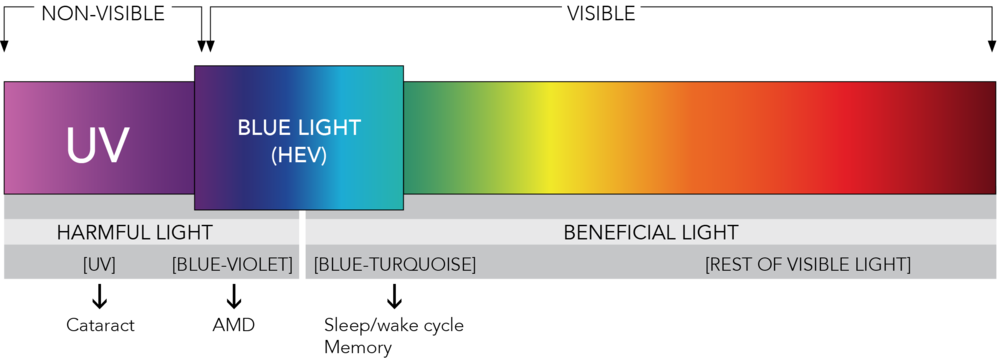
The most common sources of natural blue light is sunlight, while the most common artificial sources are the screens of our digital devices – LED TVs, phones, tablets, laptops and desktop computers.
It is also emitted from electronic devices like video game devices, and the new, low-energy fluorescent lighting (LED lights) used in offices.
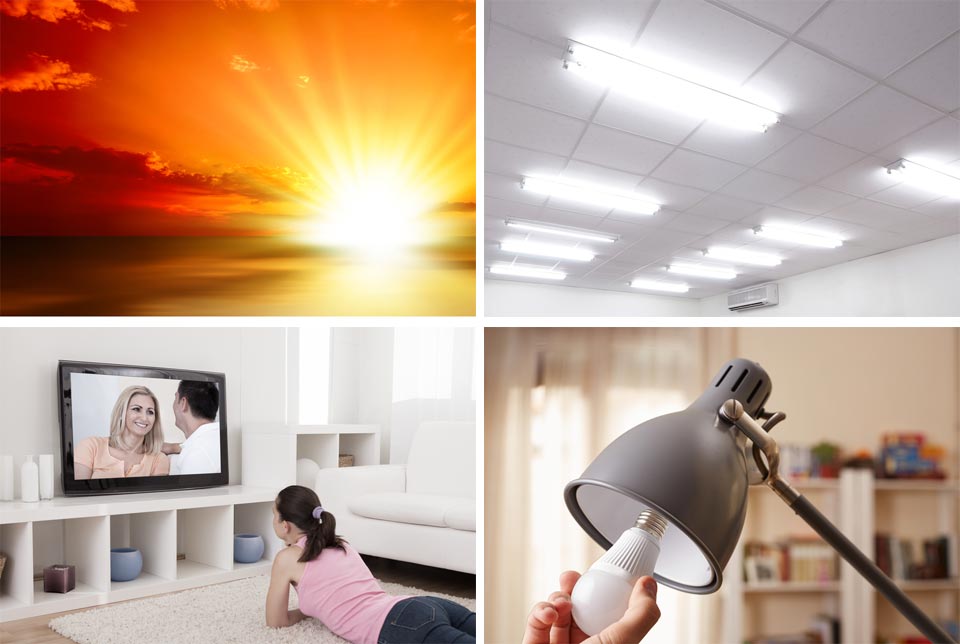
Natural blue light versus artificial blue light
Blue light is actually everywhere. When outside, light from the sun travels through the atmosphere.
The shorter, high energy blue wavelengths collide with the air molecules causing blue light to scatter everywhere. This is what makes the sky look blue. In its natural form, your body uses blue light from the sun to regulate your natural sleep and wake cycles. This is known as your circadian rhythm. Blue light also helps boost alertness, heighten reaction times, elevate moods, and increase the feeling of well being.
Artificial sources of blue light include electronic devices such as cell phones and laptop computers, as well as energy-efficient fluorescent bulbs and LED lights.
Why should we be concerned about blue light exposure?
It's not just mobile devices that cause this kind of harm. If you work eight hours a day at a computer, that's the equivalent light energy of 20 minutes outside in the bright mid-day sun. That may not sound too bad at first blush but consider that it only takes seven minutes to begin the tanning process. Worse, HEV can penetrate deeper into the skin than the sun's rays can, accelerating the damage to skin tissue.
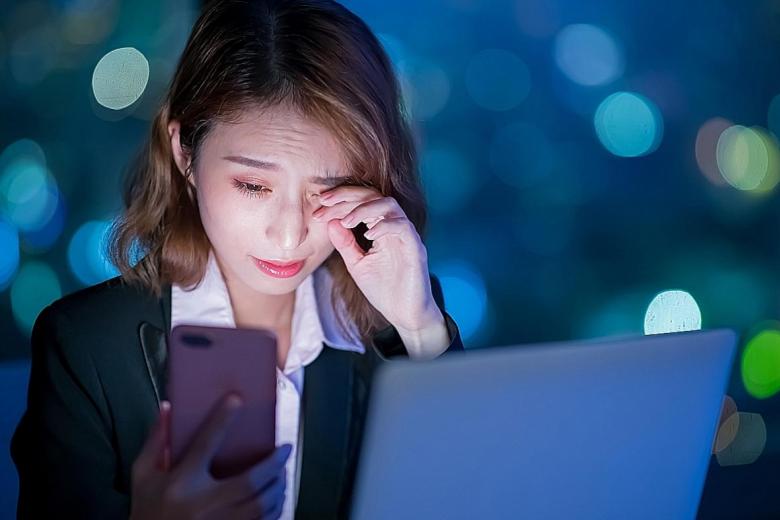
It penetrates deep enough, in fact, to affect the areas where collagen and elastin reside.
Some studies indicate that blue light damage can delay skin barrier recovery after exposure. It has even been theorized that HEV can cause greater hyperpigmentation than Ultraviolet B and C (UVB and UVC) radiation. There are indications that HEV may be worse than UVB and UVC combined.
UVAB and UVAC reach into the skin to the epidermis. That's the layer of skin just under what you can feel and touch. Under that is a far thicker layer called the dermis. Here is where all the elastin and collagen are stored. It's the layer between the epidermis and the fat layer. HEV digs deep down into this layer, nearly reaching the fat cells deep in the body.
The damage caused by HEV can make skin begin to lose its ability to hold on to water at a cellular level.
How does Blue light affect our health?
Blue light can help elevate your mood and boost awareness, but chronic exposure to blue light at night can lower the production of melatonin, the hormone that regulates sleep, and disrupt your circadian rhythm.
Circadian rhythms
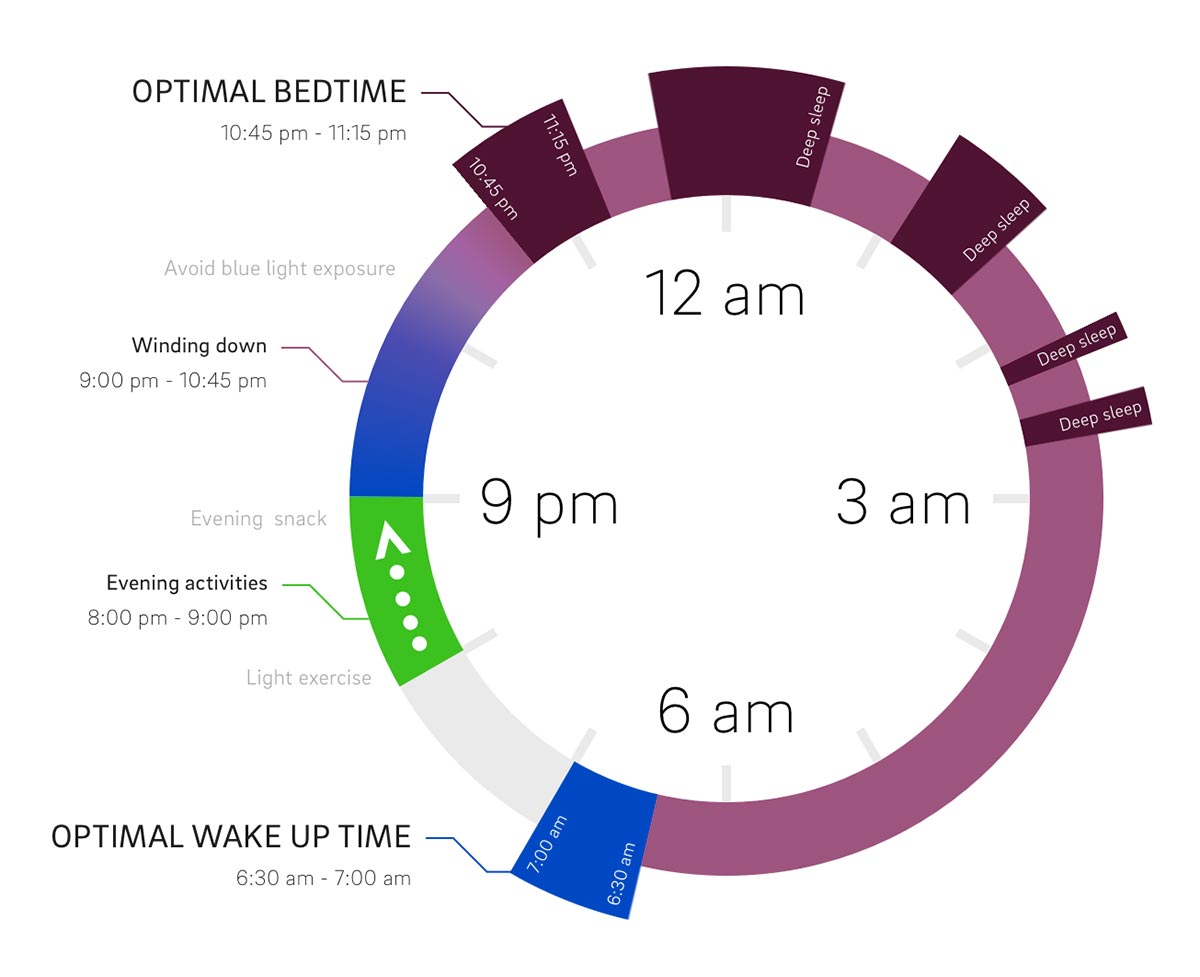
We humans operate according to a circadian rhythm. It's a roughly 24-hour rhythm that sets the pace for our bodies and minds – in quite a steady manner. For example, ever wonder why we tend to get sleepy and hungry at the same time of day? That's your circadian rhythm at work.

When we sleep, the body repairs and rejuvenates itself. The creation of new skin cells is predominately done at night, thus lending credence to the term "beauty sleep." The body's ability to rest and wake are due to circadian rhythms. Reading the phone at night, in bed can confound this pattern, preventing the ability to sleep and inhibiting the growth of new cells. Worse yet, the HEV can actually damage new cells as they are being created, never giving them a chance.
Harvard researchers have linked working the night shift and exposure to blue light at night to several types of cancer (breast, prostate) diabetes, heart disease, obesity and an increased risk for depression.
Researchers aren’t exactly sure why exposure to blue light at night seems to have such detrimental effects on our health, but it is known that exposure to light suppresses the secretion of melatonin and lower melatonin levels might explain the association with these types of health problems.
Skin Effects of Blue light exposure
Since our constant use of cell phones, tablets and computers is a fairly recent phenomenon, research in the area of treatment and prevention of blue light damage is still new. But there are some things that are already becoming evident.
Wrinkles – Think about it: When you stare into a phone, you're looking down all the time. This can lead to wrinkles in the neck and chin. Think about your position when looking at the cell screen. Hold the phone higher; it'll help with that stiff neck problem too. Both UVA rays and HEV Light can cause skin to age prematurely (photoage).
Like UVA rays, HEV Light generates free radicals (also known as ROS – Reactive Oxygen Species). These free radicals cause skin cells to produce enzymes that break down the collagen and elastin that give skin its plump, youthful appearance. This process is often called oxidative stress and it's what causes skin to photoage (age prematurely as a result of sun exposure).
Ageing is, of course, an entirely natural process, but when skin ages prematurely it may start to sag and develop deep wrinkles before its time.
Acne – Hands are full of microbes. That's normal; hands are busy things and used all the time. We wash our hands before eating, after using the toilet and so on, but to wash your hands every time you pick your phone isn't practical. But microbes get on the phone from your hands. They love heat, so when the phone warms up with use, they multiply like crazy. Then you press that to your cheek. This can clog pores and cause acne.
Pigmentation – Alongside UVA and UVB, HEV Light can induce uneven skin pigmentation (often referred to as hyperpigmentation) and may contribute to conditions such as age spots (also known as sun spots) and melasma, the pigmentation condition that leads to the sun spots often seen in darker skins.
Less skin elasticity – HEV radiation has even been linked to both wrinkles and sagging skin.
Discolored skin that looks old – HEV effects melanogenesis, the creation of melanin, which is what gives color to the skin. Without melanin, skin takes on a grayish tone and looks prematurely aged. I got melasma with my third pregnancy and I definitely notice a darkening of the spots when I do not wear my protective sunscreen regularly!
Is Blue light more damaging than UV rays?
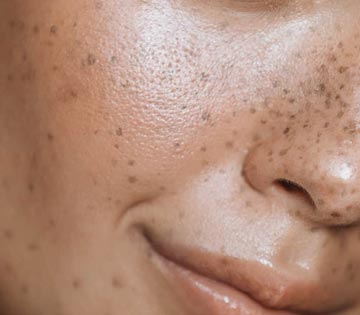
Melasma
No, it is not, but it remains an issue as we spend much more time exposed to HEV at close proximity in offices and homes, than under sunlight. It poses the biggest threat to those with melasma – it may exacerbate existing melasma and trigger outbreaks.
How can we prevent or treat melasma?
There are now sunscreens available that contain HEV as well as UVA and UVB filters. Look for ingredients such as iron oxide in skincare products, as well as micronised titanium dioxide and zinc oxide.
Protecting skin from the oxidative stress caused by HEV Light
It's important to remember that the sun's rays affect your skin even when the weather is cloudy and overcast. Sun care should not be restricted to those days when the sun is at its hottest, but should form part of your daily skincare routine.
When choosing appropriate suncare products, the priority is still to give your skin the very best protection against UVA and UVB rays, but choosing products that also combat the oxidative stress caused also by HEV Light will further help to prevent photoageing and may reduce hyperpigmentation.

Toun 28 – B1/B2 Organic Sun/Blue Light Block Cream
Fortunately, there is a korean skin care company who formulated an advanced organic mineral (physical) SPF 50+PA++++ Blue light and Sun block cream for daily use (up to 62,17%!) that protects against blue light damage. If your job involves sitting in front of a computer screen all day long, it is a ‘must have’ for you!
The Good Side of Blue Light
We know that the information in this article so far doesn't put blue light in, well, the best light; however, the truth in beauty is that some (safe) exposure to blue light is also good for us.
Routine exposure to blue light, preferably from daylight, helps regulate our body's sleep-wake cycle, improves our mood, keeps us alert and can even enhance memory.
How to reduce Blue light damage
There are benefits to blue light when used in the daytime. Natural blue light is important for our circadian cycle and health (alertness, cognitive function and well-being).
Until there is more research done on HEV and its effect on skin and eyes, the best bet is to maintain a healthy relationship to our electronic devices. Here are some tips on how to reduce Blue light damage on your health:
- Avoid unnecessary exposure. You can start by limiting the amount of time, especially at night, that you're playing games on your phone, reading on your iPad, or checking Facebook on your laptop. And don't forget to set time limits for screen time for your kids too!
- Some newer devices have a Blue Light filter option, see if yours does.

- Avoid using electronic devices in bed or when you're about to go to sleep.
- Grab yourself some sunscreen that protects your skin from the damaging effects of blue light, and wear it daily!
- Use Antioxidants. When it comes to protecting against free radical damage, topical antioxidants are the best tools. In regards to combating HEV light damage, the best antioxidants to look out for are Licochalcone A and Glycyrrhetinic Acid – both penetrate deep into the epidermis to protect skin cells.
- Get in the habit of holding your phone and tablet up to keep your skin from sagging and your neck from cramping.


